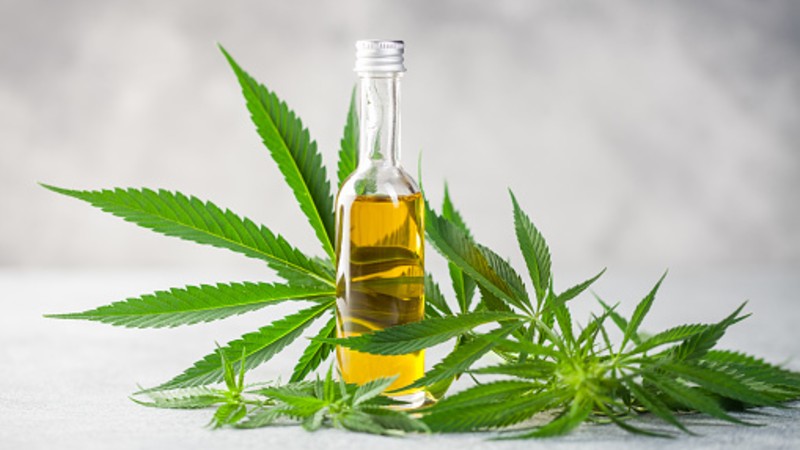What happens when a once-taboo plant goes mainstream? A whole lot of good, it turns out. With hemp’s legalization (thanks to the Farm Bill) in the US, a new industry has sprouted (pun intended) and is now thriving. First, though, Primo Vibes offers quality hemp edibles. Consider checking their inventory or exploring their site to know more about products made from hemp.
All the same, according to Forbes, there are about 25,000 hemp-based products on the market today. These include food, cosmetics, clothing, auto parts, building materials, and more. In fact, hemp has been used for centuries to make everything from rope and sails to clothing and paper. Let’s quickly look at some of the items (in the various categories) that can be made using hemp:
-
Foods And Beverages
What does the future hold for the food and beverage market? A lot of hemp, it seems. Hemp seeds are rich in protein and essential fatty acids. Given its versatility and health benefits, hemp is being used to make all sorts of edible products.
Gone are the days when the only hemp-based food was granola or hippie trail mix. Now, you can find hemp in all sorts of snacks, from energy bars to salad dressings. Tired of the available snacking options? Hemp crackers, chips, and pretzels are quickly gaining popularity. You can even find hemp-based ice cream.
Heck, even hemp milk is becoming a thing. Did you know that hemp milk has more calcium than cow’s milk? Plus, it’s rich in essential acids.
Looking to substitute gluten-laden wheat flour? Add hemp flour to your baking repertoire. You can also use hemp protein powder in smoothies and shakes. And that’s not all.
Hemp burgers, hotdogs, and sausages are also on the rise – including vegan options. You may even find recipes online to make your batch.
In the drinks department, kombucha, a fermented tea, sometimes contains hemp. In fact, some brands use it as the main flavoring agent. Other companies make hemp energy drinks, coffee, water, tea, beer, vodka – you name it. If you can drink it, someone’s made a hemp version.
-
Cosmetics And Personal Care Products
Hemp-based cosmetics are all the rage these days – and for a good reason. The plant contains all 20 amino acids, including the nine essential ones our bodies can’t produce. Plus, it’s packed with vitamins A, C, and E and potassium, magnesium, sulfur, calcium, iron, and phosphorus.
Hemp-seed oil is often used as a carrier oil in perfume and soap recipes. It’s also a common ingredient in lotions and moisturizers. As such, there’s a good chance that your go-to beauty products contain hemp.
Shampoos and conditioners containing hemp are said to hydrate and strengthen hair. And you can find all sorts of hemp-based hair styling products, too.
Some cosmetics companies use hemp oil for makeup foundation, blush, eyeshadow, and other makeup products. Manufacturers also craft lip balm, ChapStick, lip gloss, and lipstick using hemp oil. Also, think soap, toothpaste, massage oil, and personal lubricant (when you want to get a bit frisky) – all these products are in the hemp-based market.
Struggling with menstrual cramps? There’s a hemp-based solution for that. In fact, many women use cannabidiol (CBD) products – made with hemp – for relief. But it doesn’t stop there. Some firms make reusable sanitary pads incorporating layers of hemp for enhanced absorbency.
-
Clothing And Textiles
Hemp is a sturdy plant. In fact, its fibers are stronger and more absorbent than cotton. This is why, historically, hemp was used to make rope, sails, and other maritime items – a fact we alluded to above.
Nowadays, the textile industry is turning to hemp as a more sustainable alternative to other materials. For instance, Patagonia – an outdoor clothing company – uses hemp in some of its garments. The brand also blends hemp with other fabrics to make a line of board shorts.
Hemp is also being used to make all sorts of other clothing items, from shoes and wallets to belts to hats. And it’s not just the fashion industry taking advantage of hemp’s properties. Bedding, towels, curtains, carpets, and rugs also feature hemp.
In fact, some companies use a blend of hemp and bamboo to make eco-friendly sheets. The combination is said to be absorbent, odor-resistant, and thermo-regulating.
-
Building Materials
The plant’s fibers are mixed with lime to create a product called hempcrete. Hempcrete is a lightweight, aerated concrete-like material. It works as an insulating material in both commercial and residential construction.
Other firms make composite paneling out of hemp stalks. The panels are said to be stronger than plywood and have various applications, including floors, walls, and roofs.
Particle board biodegradable plastics also contain hemp. These products are stronger than their wood-based counterparts. They’re also waterproof and termite-resistant.
We could do this all day! But the products are way more than we could list in one sitting. And although we’ve barely scratched the surface, we think you get the point. And with many other states legalizing hemp, more innovative products will likely hit the market in coming years.






